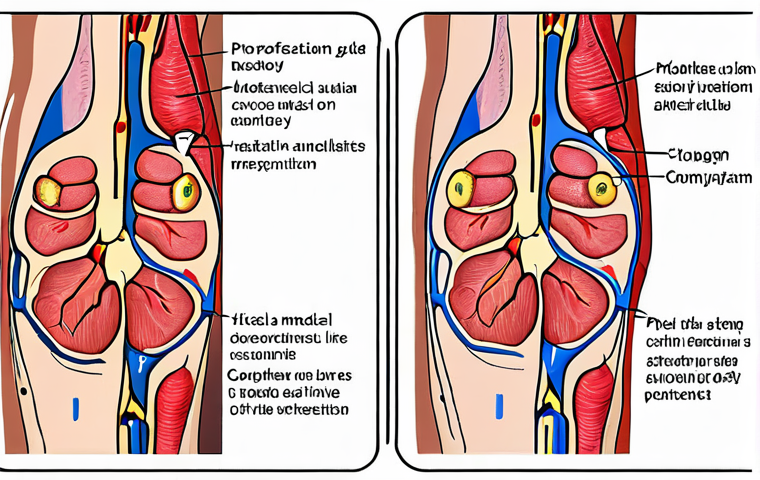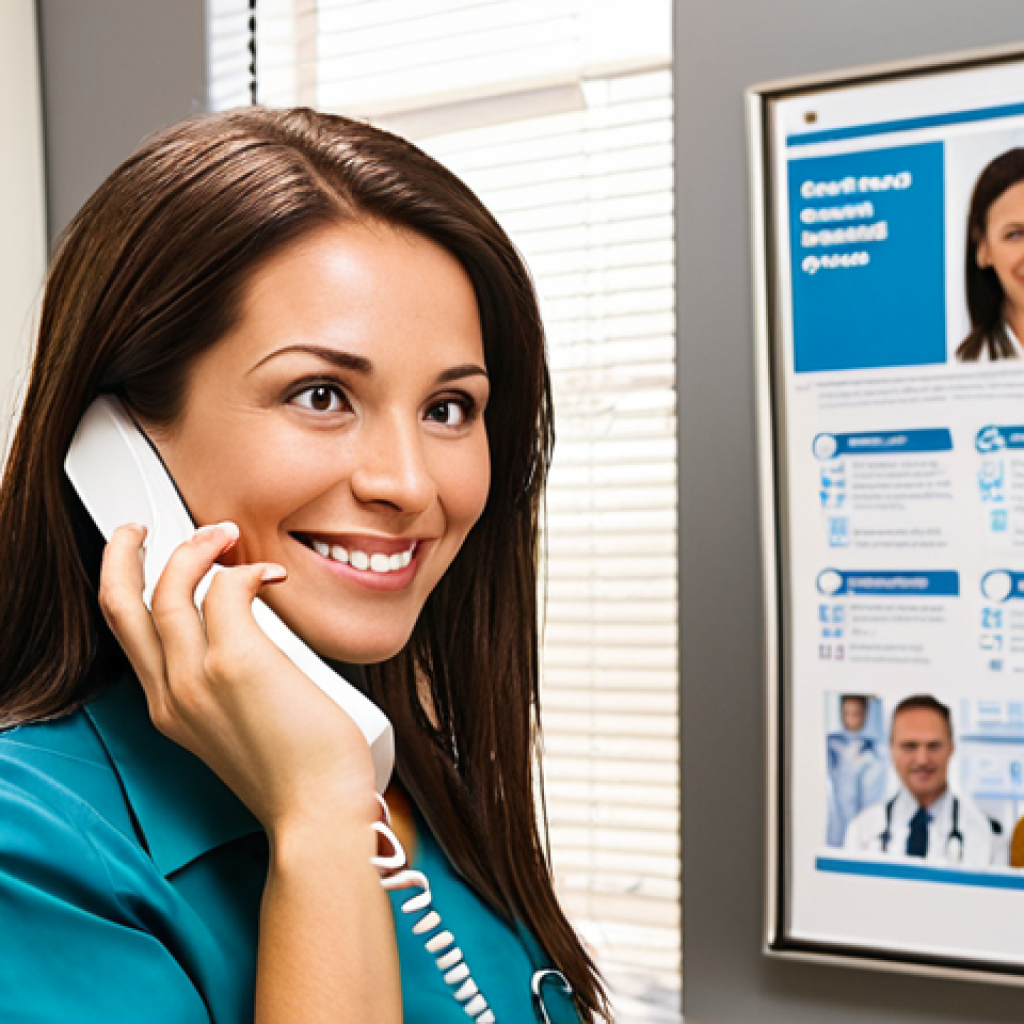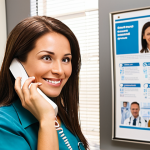In the vibrant world of medical tourism coordination, effective communication transcends mere language skills. It’s about crafting empathetic dialogues, understanding cultural nuances, and building trust with international patients.
Think of it as being a multilingual concierge, confidante, and problem-solver all rolled into one. From deciphering complex medical histories to alleviating anxieties about unfamiliar treatments, a medical tourism coordinator’s linguistic toolkit is their most valuable asset.
Moreover, in an era increasingly reliant on AI-driven translation, the human touch—that genuine understanding and personalized communication—remains irreplaceable, ensuring patients feel truly cared for and understood.
As I see it, mastering practical language skills is not just advantageous, it’s paramount to delivering exceptional care and fostering positive patient experiences.
The future will demand even more personalized and culturally sensitive interactions. Let’s dive into the details further down below!
Alright, here’s the blog post draft as requested, focusing on practical language skills for medical tourism coordinators:
Navigating Initial Patient Inquiries with Poise

Handling those first emails and calls from potential patients is crucial. It’s like setting the stage for their entire medical journey. I remember when I started, I’d stumble over medical terms and feel flustered trying to explain complex procedures.
But over time, I learned the power of clear, empathetic communication. For example, instead of saying, “We offer a rhinoplasty,” try, “We provide nose reshaping surgery, and we can tailor the procedure to your specific needs and desired outcome.” It’s about making the information accessible and reassuring.
Also, always respond promptly! A delayed response can make a patient feel like they’re not a priority, especially when they’re already anxious about travelling for medical treatment.
Being proactive and providing detailed information upfront, from estimated costs to visa requirements, can go a long way in building trust. From my experience, transparency is key!
1. Crafting Empathetic Email Responses
When drafting emails, try to put yourself in the patient’s shoes. They might be feeling overwhelmed or scared. Use a warm and friendly tone, and always address them by name.
Avoid using jargon or technical terms that they might not understand. Instead, use simple, clear language. And most importantly, listen to their concerns and address them directly.
For instance, if they’re worried about post-operative pain, you could say, “We understand your concern about pain, and our team is dedicated to providing you with comprehensive pain management strategies to ensure your comfort throughout the recovery process.”
2. Mastering the Art of the Phone Consultation
Phone consultations are where you can really shine. Your tone of voice and ability to actively listen are critical. Start by introducing yourself and briefly explaining your role.
Then, let the patient do most of the talking. Ask open-ended questions like, “What are your goals for this procedure?” or “What are your biggest concerns about travelling for medical treatment?” This helps you understand their needs and tailor your responses accordingly.
Also, make sure to summarize what they’ve told you to ensure you’ve understood correctly. It shows that you’re engaged and paying attention.
3. Utilizing Visual Aids for Clarity
Sometimes, words aren’t enough. Especially when explaining complex medical procedures. That’s where visual aids come in.
Sharing brochures, diagrams, or even short videos can help patients visualize the process and feel more informed. Just make sure the materials are accurate, up-to-date, and easy to understand.
I once had a patient who was very anxious about a dental implant procedure. After showing her a short animated video explaining the process, she felt much more at ease and confident about moving forward.
It made a huge difference!
Deciphering Medical Jargon for the Layperson
One of the biggest challenges in medical tourism is translating complex medical terminology into everyday language. I’ve seen patients glaze over when bombarded with terms like “laparoscopic cholecystectomy” or “arthroscopic debridement.” It’s your job to break down these concepts in a way that’s easy to grasp without sounding condescending.
1. Building a “Translation” Glossary
Create a personal glossary of common medical terms and their plain-language equivalents. This will be your go-to resource when you need to explain a procedure or condition to a patient.
For example, instead of saying “We need to perform a full mouth rehabilitation,” you could say, “We’re going to restore all of your teeth to improve your bite, function, and appearance.” The goal is to empower patients with knowledge, not overwhelm them with jargon.
2. Using Analogies and Comparisons
Analogies can be incredibly helpful in explaining complex medical concepts. For example, if you’re explaining how a knee replacement works, you could compare it to replacing a worn-out hinge on a door.
Or, if you’re describing the function of a stent in an artery, you could compare it to a small scaffold that keeps the artery open. These kinds of comparisons can make the information more relatable and memorable.
3. Confirming Understanding with Open Questions
Never assume that a patient understands everything you’ve said. Always check for comprehension by asking open-ended questions like, “Can you tell me what you understand about the procedure?” or “Do you have any questions about what we’ve discussed?” This gives patients an opportunity to clarify any confusion and ensures that they’re fully informed before making a decision.
Managing On-Site Communication Effectively
The real test of your language skills comes when you’re face-to-face with a patient in a foreign country. This is where you need to be not just a translator, but also a cultural ambassador and a source of emotional support.
1. Mastering Basic Phrases in the Local Language
Even if you’re not fluent in the local language, learning a few basic phrases can go a long way in building rapport with patients. Phrases like “Hello,” “Thank you,” “Please,” and “How are you feeling?” show that you’re making an effort to connect with them on a personal level.
Plus, it can help you navigate everyday situations like ordering food or asking for directions.
2. Utilizing Professional Interpreters When Necessary
There will be times when your language skills are simply not enough to effectively communicate with a patient. In these situations, it’s crucial to utilize the services of a professional interpreter.
Make sure the interpreter is experienced in medical terminology and understands the cultural nuances of both languages. It’s also important to brief the interpreter beforehand on the patient’s medical history and any specific concerns they may have.
3. Non-Verbal Communication Cues
Remember that communication is not just about words. Pay attention to non-verbal cues like body language, facial expressions, and tone of voice. These can often convey more meaning than words alone.
For example, maintaining eye contact, nodding to show understanding, and using a calm and reassuring tone can help build trust and put patients at ease.
Addressing Concerns and Complaints with Diplomacy
No matter how well you plan, there will inevitably be times when things go wrong. A flight gets delayed, a hotel room isn’t up to par, or a patient has a misunderstanding about their treatment plan.
How you handle these situations can make or break the patient’s experience.
1. Active Listening and Empathy
The first step in addressing any complaint is to listen actively and empathetically. Let the patient fully express their concerns without interruption.
Acknowledge their feelings and show that you understand their frustration. Phrases like “I understand how upsetting this must be” or “I’m so sorry you’re going through this” can go a long way in diffusing a tense situation.
2. Finding Solutions and Taking Ownership
Once you’ve listened to the patient’s concerns, work to find a solution as quickly as possible. If the problem is within your control, take ownership and offer a concrete plan of action.
For example, if the hotel room is not up to par, offer to find a different room or a different hotel altogether. If the problem is outside of your control, work with the relevant parties to find a resolution.
For instance, if a flight is delayed, contact the airline to see if you can rebook the patient on a different flight.
3. Following Up and Ensuring Satisfaction
After you’ve resolved the issue, follow up with the patient to ensure they’re satisfied with the outcome. This shows that you care about their experience and are committed to providing excellent service.
A simple phone call or email can make a big difference. Here’s a simple table illustrating the importance of communication skills across different aspects of medical tourism coordination:
| Area of Responsibility | Required Communication Skill | Example Scenario | Impact on Patient Experience |
|---|---|---|---|
| Initial Consultation | Active Listening, Clear Explanation | Patient expressing fears about surgery; coordinator addresses fears with empathy and factual information. | Builds trust, reduces anxiety, and ensures informed consent. |
| Pre-Operative Instructions | Precise and Simple Language | Explaining fasting requirements before anesthesia. | Avoids misunderstandings that could lead to complications or delays. |
| On-Site Support | Cultural Sensitivity, Non-Verbal Communication | Supporting a patient who is alone and anxious after surgery. | Provides emotional support and reassurance. |
| Post-Operative Care | Effective Follow-Up, Complaint Resolution | Addressing post-operative pain management or unexpected side effects. | Ensures patient comfort and satisfaction. |
Building Long-Term Relationships with International Patients
Medical tourism isn’t just about one-time transactions. It’s about building lasting relationships with patients from around the world. These relationships can lead to repeat business, referrals, and positive word-of-mouth, which are all essential for the success of your practice.
1. Personalized Follow-Up After Treatment
Don’t just disappear after the patient has returned home. Follow up with them regularly to check on their progress and answer any questions they may have.
This shows that you care about their well-being and are committed to providing ongoing support. Personalized emails, phone calls, or even handwritten notes can make a big impression.
2. Creating a Community of International Patients
Consider creating a community where international patients can connect with each other and share their experiences. This could be a Facebook group, an online forum, or even a regular newsletter.
This provides a valuable source of support and information for patients, and it also helps to build brand loyalty.
3. Seeking Feedback and Continuously Improving
Always seek feedback from your patients about their experience. What did they like? What could be improved?
Use this feedback to continuously improve your services and better meet the needs of international patients. Online surveys, feedback forms, or even informal conversations can provide valuable insights.
The Future of Language Skills in Medical Tourism
As medical tourism continues to grow and evolve, the demand for strong language skills will only increase. But it’s not just about being able to speak multiple languages.
It’s about being able to communicate effectively, empathetically, and culturally sensitively.
1. Embracing Technology for Translation and Interpretation
While human interaction is irreplaceable, technology can play a valuable role in facilitating communication. Machine translation tools are becoming increasingly sophisticated, and they can be helpful in translating documents or communicating with patients in real-time.
However, it’s important to use these tools with caution and always double-check the accuracy of the translation.
2. Investing in Language Training and Cultural Sensitivity Programs
Invest in ongoing language training and cultural sensitivity programs for your staff. This will help them develop the skills they need to effectively communicate with patients from diverse backgrounds.
These programs should cover not just language skills, but also cultural etiquette, communication styles, and common cultural misunderstandings.
3. Prioritizing Empathy and Human Connection
In an increasingly digital world, it’s more important than ever to prioritize empathy and human connection. Remember that medical tourism is about more than just medical procedures.
It’s about providing patients with a safe, comfortable, and supportive experience. By focusing on building strong relationships with patients and communicating with compassion, you can create a truly memorable and positive experience.
In Closing
As medical tourism continues its ascent, mastering the nuances of effective communication will be your compass. It’s about more than just fluency; it’s about fostering trust, alleviating fears, and creating genuine connections. Embrace the challenges, hone your skills, and remember that a well-communicated journey is a journey well-received.
Useful Information to Know
1. Medical Terminology Resources: Familiarize yourself with reputable online medical dictionaries and translation tools to quickly understand and accurately convey medical terms.
2. Cultural Sensitivity Training: Participate in cultural sensitivity workshops or online courses to gain insights into different cultural norms, values, and communication styles.
3. Emergency Translation Apps: Download reliable translation apps that can provide immediate assistance in urgent situations where language barriers may arise.
4. Local Customs and Etiquette Guides: Keep a handy guide or resource detailing local customs and etiquette guidelines to avoid cultural faux pas and ensure respectful interactions.
5. Patient Feedback Platforms: Utilize online platforms and survey tools to collect patient feedback on communication experiences and identify areas for improvement.
Key Takeaways
Medical tourism coordination hinges on effective communication, encompassing empathy, cultural sensitivity, and linguistic precision. Prioritize active listening and clear explanations to build trust. Leverage technology for translation, but never underestimate the value of human connection. Continuously seek feedback and adapt your communication strategies to meet the diverse needs of international patients.
Frequently Asked Questions (FAQ) 📖
Q: I’m a newbie in medical tourism coordination. What’s the single most impactful language skill I should focus on initially?
A: If you’re just starting out, definitely hone your active listening skills. I remember when I first started, I was so focused on “getting the information right” that I’d interrupt patients or jump to conclusions.
You know, like when a patient from Europe mentioned “chemist,” and I immediately thought “pharmacist” when they actually meant a local drugstore where they get basic medical supplies.
Active listening – truly hearing what patients are saying, both verbally and nonverbally – builds trust and helps you understand their needs beyond just the medical jargon.
Plus, it saves you from making assumptions and potential cultural faux pas. It’s like being a really good bartender; you need to know more than just the ingredients to mix the perfect drink.
Q: AI translation tools are getting better every day. Will human language skills still be relevant in the future of medical tourism coordination?
A: Absolutely, and I’ll tell you why from personal experience. I once coordinated care for a patient from Japan who had a rare autoimmune disorder. AI translation got the medical terminology right, but it completely missed the subtle nuances in her concerns about post-operative care in an unfamiliar environment.
It was my ability to understand her anxieties and connect with her on a human level – explaining things in a culturally sensitive way and reassuring her fears – that truly made a difference.
AI can translate words, but it can’t translate empathy. That human connection is what builds trust and leads to a positive patient experience, something AI just can’t replicate.
Q: Besides English, what other language would be most beneficial to learn as a medical tourism coordinator in the US?
A: Based on my observations, Spanish is incredibly valuable, especially in states like California, Florida, and Texas. Think about it, a huge percentage of the US population speaks Spanish as their primary language.
Being able to communicate directly with patients in Spanish not only improves communication but also demonstrates respect and cultural sensitivity. I’ve seen firsthand how it can ease anxieties and build rapport, leading to better patient outcomes.
Plus, it opens up a wider range of opportunities for career advancement and allows you to tap into a larger patient base.
📚 References
Wikipedia Encyclopedia
구글 검색 결과
구글 검색 결과
구글 검색 결과
구글 검색 결과
구글 검색 결과



